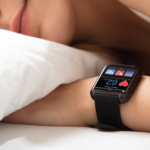
Image Source Trading Ltd / SHUTTERSTOCK.COM
The Case
A 58-year-old patient with knee osteoarthritis has been decreasing her physical activity over the past several years due to painful joints, which has resulted in significant weight gain. At her appointment, you encourage her to engage in more physical activity and eat a well-balanced diet.
A few weeks later, the patient returns to your office looking for recommendations for weight loss. She insists she has been more active and is eating better, but her weight has not changed. A few of her coworkers use physical activity monitors or smartphone apps to help them be more active and lose weight. She is wondering if these would work for her. She is curious about your opinion of these and whether they could work for her, too, especially when she is facing chronic knee pain. She is worried that if she continues on this path of inactivity and continued weight gain, she will likely need a joint replacement in the next few years.
The Dilemma
Should clinicians be recommending the use of these technologies to assist with behavior change, even if the efficacy of using these technologies for modifying diet, physical activity and weight is unknown? Should clinicians be considering personal factors (e.g., socioeconomic status, technology literacy, physical limitations) that may influence the patient’s ability to access or utilize the technology prior to determining whether a recommendation should be made?
The Evidence
The use of technology to facilitate behavior change has become increasingly more popular over the years as the utilization of smartphones, smartphone applications and wearable physical activity monitors continues to rise. According to the Pew Research Center, over 77% of adults own a smartphone, including 42% of those older than 65.1 It is estimated that one in six adults uses a wearable device (i.e., smartwatch or fitness band) as well.2
Smartphone and wearable users have the opportunity to download numerous apps to pair with these devices in efforts to track fitness and diet or nutrition. Of an estimated 165,000 mobile health apps currently on the market, 57,750 (35%) of these are fitness based and another 19,800 (12%) are diet and nutrition based.3
Although these health-related apps and wearables are nearly ubiquitous in today’s society, recommending the use of these devices to facilitate diet and activity change may not be as straightforward as it may seem. First, most of the commercially available smartphone apps are not guided by theory and may not incorporate the evidence-based behavior change techniques necessary to modify and sustain newly adopted behaviors.4,5
